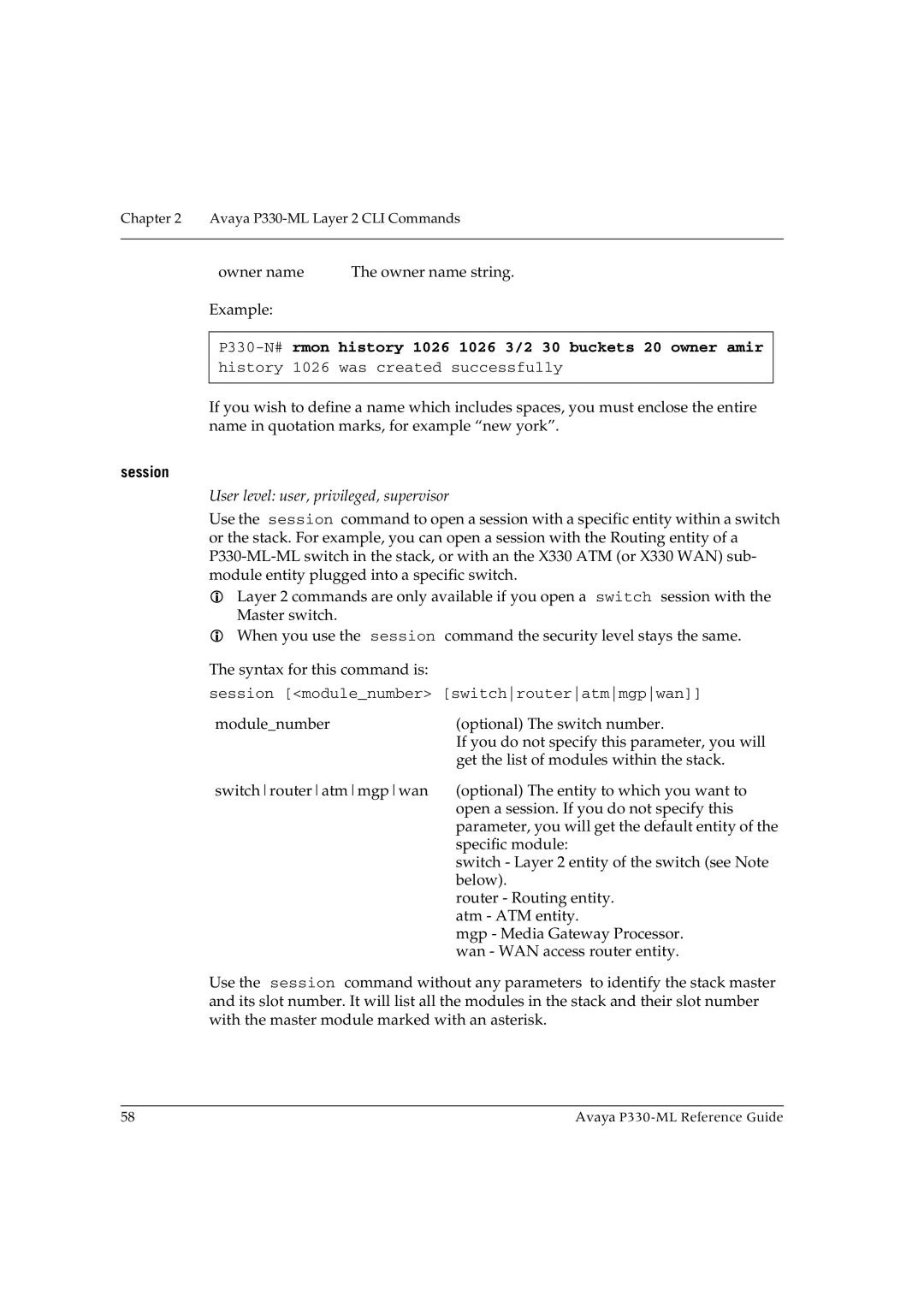
Chapter 2 Avaya P330-ML Layer 2 CLI Commands
owner name | The owner name string. |
Example:
P330-N# rmon history 1026 1026 3/2 30 buckets 20 owner amir
history 1026 was created successfully
If you wish to define a name which includes spaces, you must enclose the entire name in quotation marks, for example “new york”.
session
User level: user, privileged, supervisor
Use the session command to open a session with a specific entity within a switch or the stack. For example, you can open a session with the Routing entity of a
Layer 2 commands are only available if you open a switch session with the Master switch.
When you use the session command the security level stays the same.
The syntax for this command is:
session [<module_number> [switchrouteratmmgpwan]]
module_number | (optional) The switch number. |
| If you do not specify this parameter, you will |
| get the list of modules within the stack. |
switchrouteratmmgpwan | (optional) The entity to which you want to |
| open a session. If you do not specify this |
| parameter, you will get the default entity of the |
| specific module: |
| switch - Layer 2 entity of the switch (see Note |
| below). |
| router - Routing entity. |
| atm - ATM entity. |
| mgp - Media Gateway Processor. |
| wan - WAN access router entity. |
Use the session command without any parameters to identify the stack master and its slot number. It will list all the modules in the stack and their slot number with the master module marked with an asterisk.
58 | Avaya |
